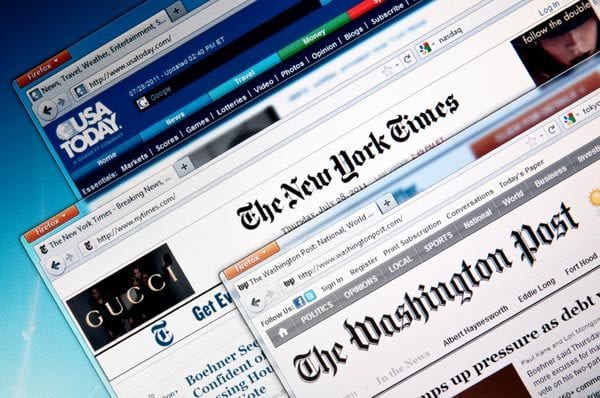The 5-Second Trick For News Channels
The 5-Second Trick For News Channels
Blog Article
Getting My News Channels To Work
Table of ContentsThe Definitive Guide for News ChannelsSome Known Factual Statements About News Channels Not known Details About News Channels
Throughout its history, the creative team for the comic strip were all females, consisting of the authors and musicians who continued the strip after Messick retired in 1980. Based on the character, style, and appeal of Hollywood actress Rita Haywood, Brenda Starr was established and equipped, lived a life of journey and intrigue, and always got the newspaper article she was investigating.Joye Hummel was the first woman employed to write Wonder Woman comics -she wrote every episode between 1945 and 1947, but the writing credit report mosted likely to" Charles Moulton,"a pen name for William Moulton Marston, the developer of the lie-detector examination and the maker and initial author of the comic collection. An entire collection of females(consisting of birth-control leader Margaret Sanger's niece)was accountable for the development of the comic, noted historian Jill Lepore in her book, The Secret Background of Marvel Lady( 2015 ), which documented the advancement of the personality from a solid feminist into an extra male-like superhero. Ladies also contributed greatly to and the advancement of animated films. They take a trip to battle zone, commonly best into the center
Her tale is told in the 2023 function film Lee staring Kate Winslet., para.

of bias: A sort of prejudice in which a journalist's political sights impact information insurance coverage. A sort of predisposition in which race, gender, ethnic culture or various other variables such as society or financial class influence information protection. A newspaper article may present just one side of a story and leave out facts or various other information that support a various point of view. For example, a newscaster might just talk to liberal commentators or an internet site could just estimate conservative sources. A short article or news story might interview or reference even more sources that support one view over one more. Complementary or unflattering pictures, pictures, or camera angles can also influence the public's understanding of a person or occasion. The photos an editor or producer picks may show a prejudice. The complying with internet sites go over additional forms of media predisposition: Meanings of media predisposition from Recognizing Predisposition (Information Literacy Task ). Your own predispositions can influence just how you react to information stories. Confirmation predisposition, or the selective collection of evidence, is our subconscious tendency to seek and interpret information and various other evidence in methods that attest our existing beliefs, concepts, expectations, and/or theories. For that reason, confirmation bias is both influenced by and feeds our implied biases. It can be most established around beliefs and ideas that we are strongly affixed to or that prompt a strong psychological reaction. And much more importantly, you don't really see what obtains edited out(Eli Pariser ). The intellectual seclusion that can happen when websites make use of algorithms to selectively presume the information an individual would intend to see, and after that offer details to the customer according to this presumption (Technopedia). A circumstance where news that we do not like or disagree with is automatically filteringed system out and this might have the impact of tightening what we understand(Richard Fletcher ). We should be cautious of realities and details that we get from prejudiced resources, and we ought to validate that information with other reliable resources."- Larry Atkins. Skewed: An Essential Thinker's Guide to Media Bias. Prometheus, Read More Here 2016.
News Channels for Dummies
Is it a news tale? An opinion item? Marketing? Who produced the content and where does it obtain its financing? Do all the write-ups have a partial slant?"Understanding what you are checking out is the primary step to determining what you can think."Is the source given? Is the resource related to a political event or special rate of interest team that might indicate a prejudice?"The essential inquiry is, how do they recognize? If it's not clear, you ought to be a lot more doubtful." What evidence do the sources use as evidence? Was it confirmed? Is the source a file? An eyewitness? Or is it rumor, pre-owned, or speculation? "Count on the product that supplies much more proof, is more particular and much more clear concerning the proof being provided." Did the evidence warrant the conclusion or main point of the tale? Or can the exact same evidence be used to draw a various analysis?"We need to expect sufficient proof to confirm the situation., journalistic style and category that obscures the line in between details and amusement. The term soft information was originally synonymous with attribute stories put in papers or television newscasts for human rate of interest, the principleexpanded to include a wide range of media outlets that present more personality-centred stories. Commonly, so-called difficult news associates the situations of a recent event or occurrence considered to be of basic regional, local, nationwide, or worldwide importance. Tough information typically worries problems, national politics, economics, worldwide connections, welfare, and scientific developments, whereas soft information concentrates on human-interest tales and celebrity. Research studies by the Global Media Tracking Job, begun in 1995, found women press reporters
more probable to be assigned soft-news tales regarding amusement , arts, and society. Such tales were likewise more likely to include women in conventional, instead than specialist, functions. Past the social dynamics of what makes information" difficult"or"soft, "Thomas E. Patterson of the John F. Kennedy Institution of Government at Harvard College suggested in his public-policy paper"Succeeding and Doing Great"that soft information "deteriorates the foundation of democracy by diminishing the general public's details about public events and its rate of interest in politics. "His argument, based on a two-year research of American news behaviors, wrapped up that soft news misshapes the public's perceptions of national politics and public events. Others have challenged that notion, recommending that the impacts of soft news differ, depending upon the audience's level of interest in politics and international affairs. The the very least politically involved people are a lot more likely to check out soft-news programs and outlets. The impacts of soft information on political understanding
and interest rate of interest debated disputed the 21st century, features, entertainmentHome entertainment and lifestyle way of living tales to be a substantial significant component print and broadcast news information. Television news is an important component of our lives, offering us with updated details and maintaining us notified concerning the globe around us. Have you ever wondered concerning the elaborate procedure entailed in bringing the information to your screens? In this write-up, we'll take a deep dive into the TV information manufacturing process, shedding light on the behind-the-scenes initiatives that make it all feasible. Newsrooms have committed teams of reporters, manufacturers, and editors who collaborate to recognize and prioritize information tales. They perform research, display damaging news, and make a decision which tales should have coverage. Factors such as newsworthiness, target market passion, and journalistic ethics play critical functions in this decision-making procedure. Once the news stories are picked, reporters
and journalists are dispatched to check this gather information. Aesthetic elements, such as video and graphics, are likewise incorporated right into the final manuscript. Once the newspaper article are scripted and modified, it's time to move into the workshop. Television information workshops are geared up with several cameras, teleprompters, lighting configurations, and control rooms. Anchors and reporters supply the news from the studio, frequently with the aid of teleprompters showing the manuscript.
This involves further editing, including graphics or overlays, and tweak the audiovisual components. The objective is to guarantee that the news tale exists precisely, briefly, and in an engaging manner. Manufacturers and editors interact to develop a final product that meets the top quality criteria of the news organization. On the other hand, papers have longer manufacturing cycles and publishing routines, usually delivering news on a day-to-day or weekly basis. While newspapers can give more in-depth evaluation and background information, they might not be as instant as television information. TV information utilizes audiovisual elements such as online video footage, interviews, and visuals to engage the audience. On the other hand, newspapers rely upon printed message, images, and infographics.
to share information. While papers can include images and graphics, they do not have the vibrant nature of TV information. Television news sections are commonly succinct and compressed due to time limitations. Information supports or press reporters present the bottom lines and highlights of a story in a restricted duration. Readers have the chance to invest more time with the content and
explore different perspectives. TV news gives an easy viewing experience where visitors receive information as it is presented. News Channels. Communication is limited to call-ins, live chats, or social media sites involvement throughout specific programs. Newspapers, on the various other hand, offer visitors the capability to engage actively with the web content. The manufacturing process for TV news involves numerous stages
All About News Channels
consisting of editorial planning, details event, scripting, workshop manufacturing, and post-production. This procedure calls for sychronisation among different experts, such as reporters, press reporters, editors, electronic camera drivers, and manufacturers. Newspaper production entails similar pop over to this site phases, including story selection, research, composing, modifying, and format design. Nonetheless, the medium of print allows for much more
comprehensive editing and style considerations. Each medium has its strengths and limitations, and customers usually select based on their choices for immediacy, visual/audio engagement, deepness of analysis, or portability. Inevitably, both TV information and papers add to the general landscape of journalism, accommodating different target markets and their one-of-a-kind requirements. TV information and newspapers satisfy various sections of the audience. This diversity in audience preferences makes sure that both mediums can reach and offer a vast array of individuals with varying demands and choices. Both television information and newspapers have adjusted to the electronic age by establishing a strong on-line existence. TV information outlets give online streaming, on-demand videos, and information updates through their internet sites and mobile applications. This expansion right into electronic platforms has actually allowed them to reach a bigger target market and adjust to changing consumer actions.
Neighborhood news outlets usually focus on community information, while national and worldwide information organizations cover a broader variety of subjects. A popular evening information program from the British Broadcasting Firm(BBC), delivering thorough protection of residential and worldwide information, politics, society, and a lot more (News Channels). A Television information manufacturer is accountable for looking after the production of information sections or programs.
Report this page